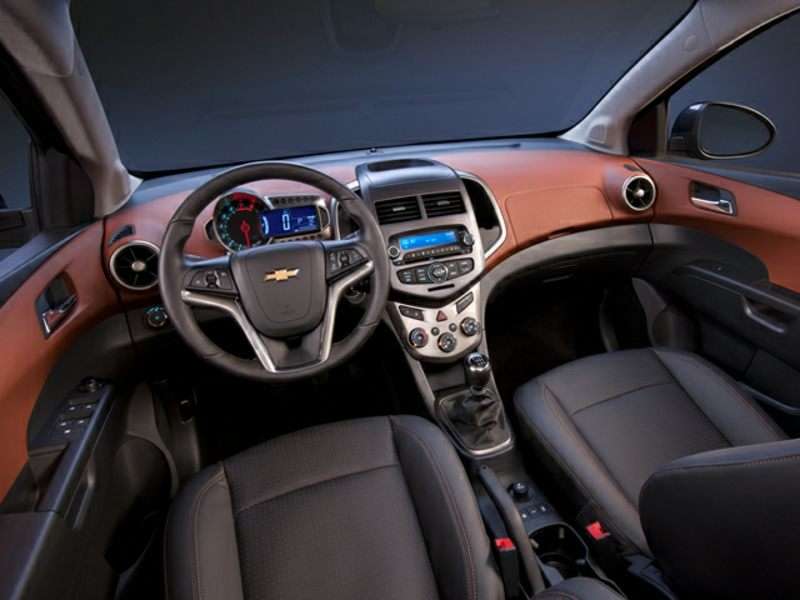Recent Articles
Popular Makes
Body Types
2016 Chevrolet Sonic Road Test & Review
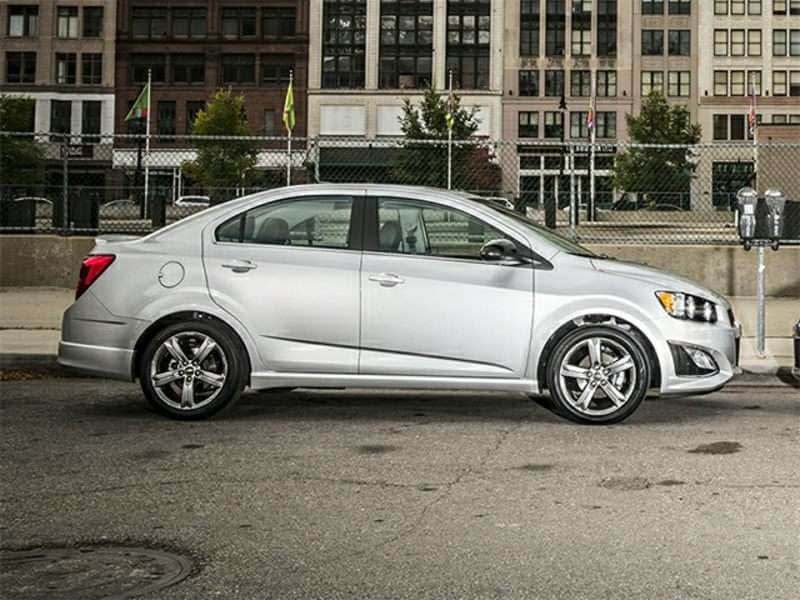
2016 Chevrolet Sonic
As GM’s entry-level brand, Chevrolet probably has the most ferocious competition of all of the General’s divisions. Practically every model flashing the gold bowtie competes in the most hotly contested segments of the automotive marketplace.
Think about it; Malibu is up against Camry and Accord, Cruze is up against Civic and Corolla, and Silverado must do battle with F-150. Meanwhile, the 2016 Chevrolet Sonic is tasked with facing down Honda’s Fit, Hyundai’s Accent, Kia’s Rio, and Ford’s Fiesta.
For the 2016 model year, Sonic offers Chevy MyLink as standard on all but the LS trim package. The manual transmission has been dropped from the LTZ roster of features, as has the CD player across the board.
Models & Pricing
The five-passenger subcompact 2016 Chevrolet Sonic is offered in both sedan and hatchback bodies with a choice of four trim levels; LS, LT, LTZ, and RS. Manual transmissions are standard on all but LTZ, which is offered only with an automatic. All other trims offer the automatic transmission as an option.
For 2016, Chevrolet Sonic LS pricing starts at $15,220 for the four-door sedan ($16,470 with the automatic transmission) and $15,820 for the hatchback ($17,070 with the automatic transmission). This gets you a 138-horsepower, 1.8-liter normally aspirated inline four-cylinder engine and a five-speed manual transmission. Air conditioning, power door locks with remote keyless entry, and a tilt/telescoping steering wheel are standard equipment, as is a six-month OnStar telematics subscription with 4G LTE WiFi.
Base price for the LT trim level is $17,030 ($18,420 with the automatic) for the sedan and $17,360 ($19,020 automatic) for the hatchback. Sonic LT gets a six-speaker premium sound system, Bluetooth, smartphone applications integration, satellite radio, power windows, remote ignition (with the optional automatic transmission), and a seven-inch touchscreen.
The sporting-oriented 2016 Chevrolet Sonic RS starts at $20,970 for both the sedan and the hatchback ($22,730 with the automatic transmission). Features include a turbocharged 2.0-liter inline four-cylinder engine, four disc brakes, and an aerodynamic body kit. Sonic RS also gets a more aggressively tuned suspension system, leather and simulated suede upholstery, as well as a sport steering wheel.
With a base price of $20,655 for the sedan and $21,220 for the hatchback, Sonic LTZ standard features include the turbocharged engine, an automatic transmission, heated leatherette front seats, a rearview camera, fog lamps, and 17-inch alloy wheels.
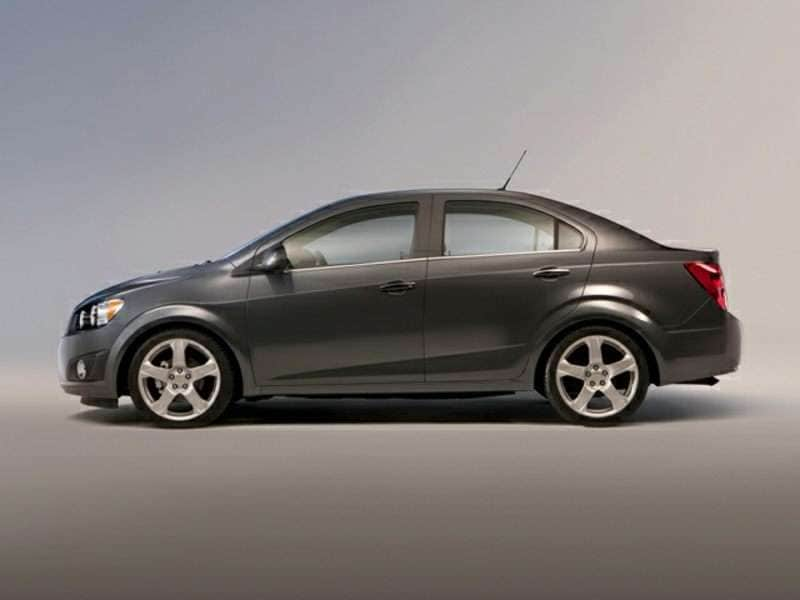
Exterior Styling
To our eye, the sedan is the more attractive of the two body styles—particularly when equipped with the 17-inch tire and wheel set of the LTZ Turbo. In fact, from several angles, the Sonic sedan looks like a miniature Cruze (which, most assuredly, is a good thing). With its short overhangs and wheels pushed way out to the corners, Sonic looks firmly planted to the ground.
Chevrolet’s spokespeople are quick to point out the motorcycle cues reflected in the design of the Sonic’s round taillamps and headlamps. Giving the car more of a premium look, a chrome surround frames the flat black honeycombed pattern of the grille.
On the hatchback, the door handles are integrated into the C-pillar and rendered in black, giving the car the appearance of a two-door hatchback. All in all, it’s a pleasing design, and while it’s evident Sonic is an inexpensive car, it looks like a premium model.

Interior Design & Comfort
The motorcycle treatment carries over inside as well, with the most obvious reference being the instrument panel. Consisting of a large analog tachometer paired with a digital speedometer, the Sonic’s instrumentation looks like Chevrolet raided a sport bike factory. Unique and distinctive in a class where unique and distinctive are huge selling points, it works nicely.
Our LTZ Turbo test car was fitted with leatherette upholstery. Less expensive models get attractive looking (if somewhat rough) cloth seats. Speaking of the seating, it’s remarkably comfortable, and there’s even enough room in the back seat for three passengers to be comfortable for short trips around town.
A two-tone dash and door panel treatment, similar to that offered with the Cruze, is also available. It’s good to see some effort put into making the interior of a car at this price point seem more premium than it actually is. In this regard, Chevrolet has progressed considerably.
And, while Sonic does have its fair share of hard plastic, Chevy’s product planners at least made an effort to keep the shiny to a minimum. They also included soft touch materials in places where occupants are most likely to come into contact with the interior.
Here again, while you can tell the Sonic is an inexpensive car, it feels pricier than it actually is.
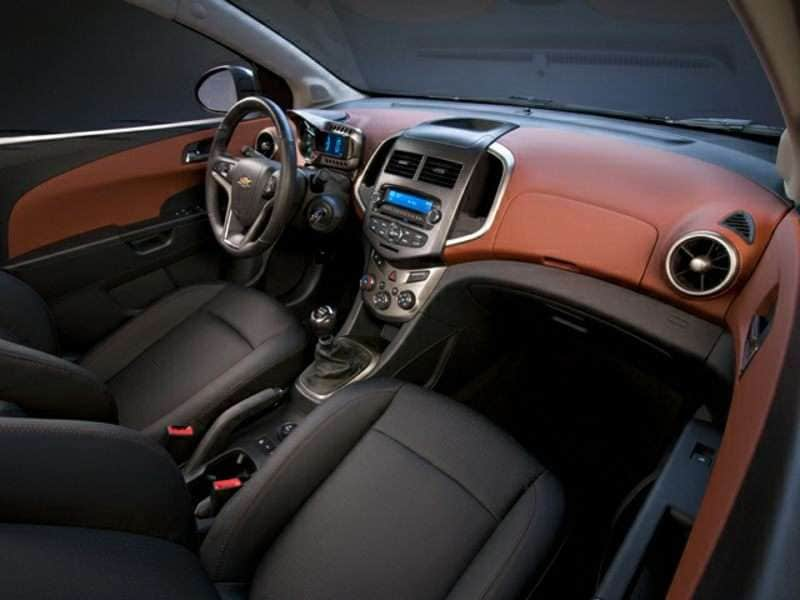
Storage & Cargo Capacity
Storage is abundant. In addition to the usual door panel, glove box and center console storage areas, Sonic’s interior designers also specified two very handy binnacles on each side of the top of the center stack. They’re perfect for stashing a smartphone, a pair of sunglasses, or any other small item you might want to have readily available. There is a downside to these, though. Anything you place there is visible to passersby when the car is parked. You’ll want to avoid leaving “attractive” items in them when you’re away from the car.
Cargo capacity for the 2016 Chevrolet Sonic hatchback is 19 cubic feet with the rear seat deployed and 47.7 cubic feet with it folded away. Sonic sedan’s trunk is good for 14.9 cubic feet of capacity.
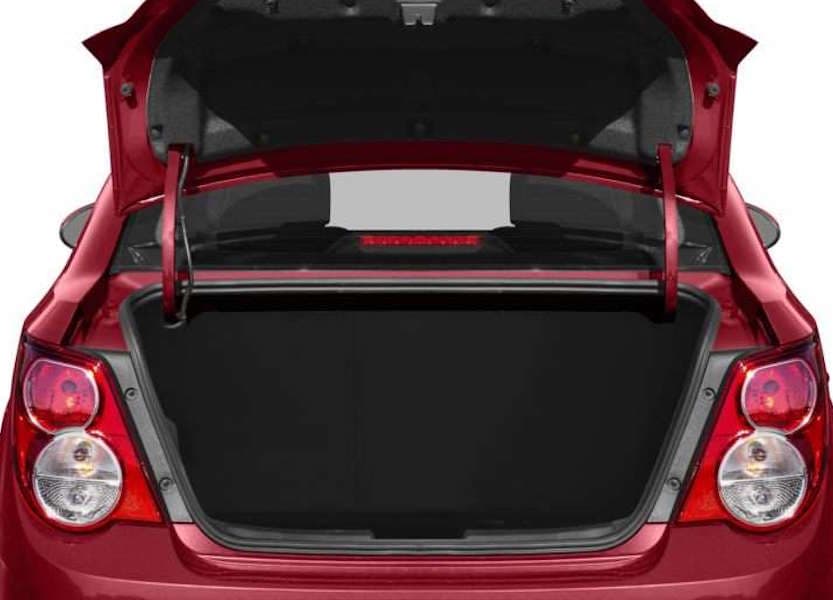
Safety Features & Crash Test Ratings
The 2016 Chevrolet Sonic’s armor starts with a rigid body structure comprised of strategically employed high-strength steel. Chevy’s engineers also placed 10 airbags around the cabin. Meanwhile, reinforced front hinge and A- and B-pillar zones help maintain the integrity of the passenger compartment in a crash.
Should Sonic roll over in a crash, the roof is said to be capable of supporting up to four times the car’s weight. Additionally, the Sonic’s breakaway pedal assembly mitigates the risk of injuries to lower extremities. Sonic also has a rollover sensor to get its airbags ready for the big one if it gets the feeling something untoward is about to go down. The optional Driver Confidence package (available on all trims, save LS) includes forward collision warning and lane departure warning.
NHTSA says the Chevrolet Sonic is a five-star car, while the IIHS awarded Sonic its top rating (“Good”) in all but the small overlap frontal crash test, in which Sonic scored “Marginal,” which the Institute’s second to the lowest rating.

Engines & Fuel Economy
The 2016 Chevrolet Sonic’s normally aspirated 1.8-liter engine makes 138 horsepower and 123 ft-lbs of torque. It manages 30 mpg overall with the five-speed manual and 28 with the six-speed automatic.
Easily the more desirable powerplant option for the front-wheel drive Sonic is the 1.4-liter Turbo. This engine produces 138 horsepower and 148 ft-lbs of torque. While 23 ft-lbs of torque sounds like a minor improvement, the result is quite startling when paired with the six-speed manual transmission. Plus, you get better fuel economy.
Paired with the six-speed manual transmission, turbocharged Sonic LT and LTZ models boast 33 mpg combined city/highway mpg. With the automatic, they’re rated at 31 mpg combined. Sonic RS is rated at 30 combined for the manual, and 28 with the automatic.
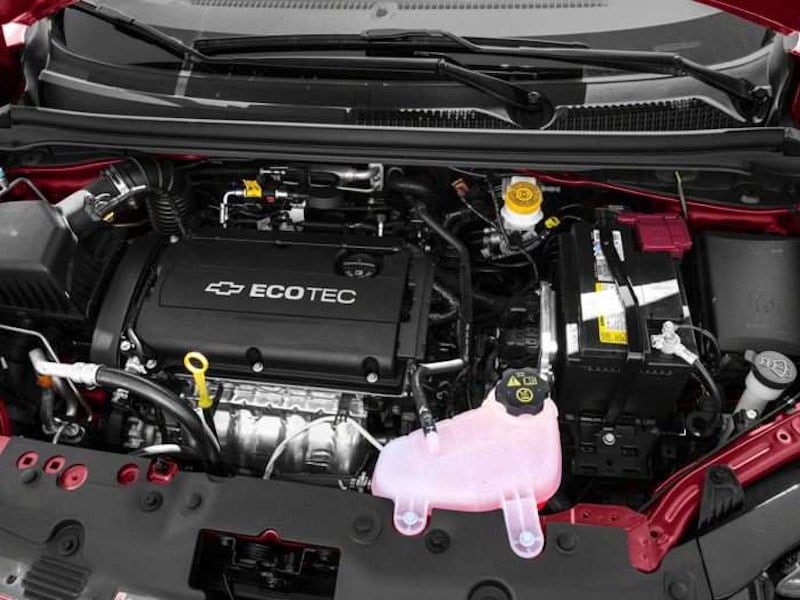
Performance
The turbocharged 2016 Chevrolet Sonic is quite fun to drive. The 1.4 loves to wind and you get a satisfying degree of thrust out of it. Additionally, the little Chevy shines when asked for rapid and repetitive changes of direction. Yes, it uses electric power steering, as do most contemporary cars, but it is a very responsive system with good transitional feel. The steering is also very linear in its response and remarkably accurate.
Sonic’s clutch take-up is smooth and the shifter feels nice as it goes from slot to slot. Braking is solid and confidence inspiring, though the pedal is a bit on the soft side. Speaking of the pedals, their arrangement is wholly conducive to matched-rev heel and toe throttle blipping downshifts, so you can readily enjoy hustling the Sonic along a challenging serpentine road.
Certain cars prove driving a slow car fast can be more fun than driving a fast car fast. Chevrolet’s Sonic presents just such an opportunity.
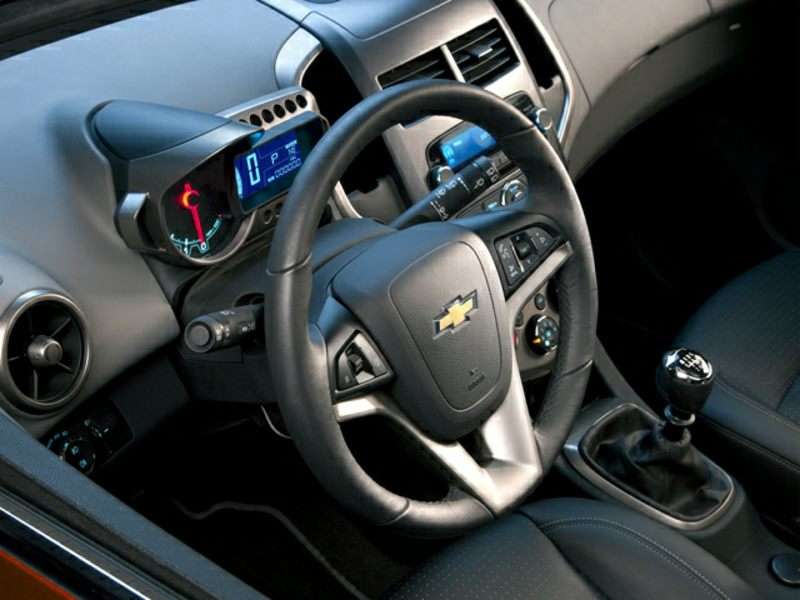
Final Thoughts
Just as Cruze put Chevrolet firmly in the hunt in the compact sedan category, Sonic has given Chevrolet something to work with in the subcompact class. The 2016 Chevrolet Sonic is a handsome car with a remarkable feature set for its price and class.
As an entry-level car for a young adult looking to make their first new purchase, or an older person seeking a playful mode of transportation, our Sonic Turbo test car proved more than capable of filling the bill.
If you are shopping this category, test-driving a 2016 Chevrolet Sonic will be a good use of your time.
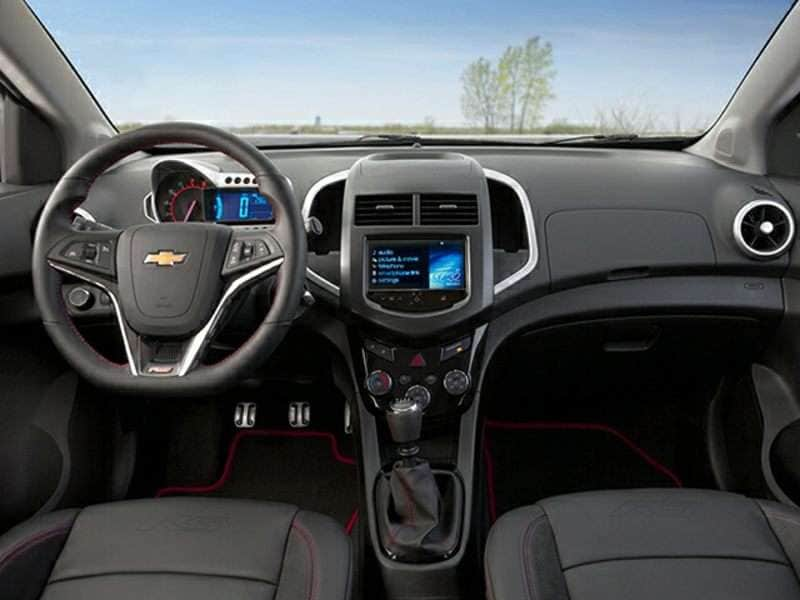
Pros & Cons
The 2016 Chevrolet Sonic is handsome, fun to drive, reasonably thrifty with fuel, and offers a nice complement of comfort and convenience kit. On the other hand, Sonic’s competitors do offer features it doesn’t (most notably voice activated telematics), and the sport suspension system applied to the RS model is quite stiff.
